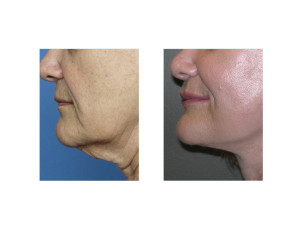
The few studies that have been conducted on facelift satisfaction have not used rigorous scientific outcome methodology which makes their determinations potentially overstated. One method of quantitating patient satisfaction is using a standardized outcome tool . The FACE-Q is an established validation questionnaire that has been used in aesthetic surgery for assessing patient satisfaction and outcomes for a variety of aesthetic facial procedures.
In the August 2015 issue of the journal Plastic and Reconstructive Surgery an article appeared entitled ‘Facelift Satisfaction Using the FACE-Q’. In this paper the authors reviewed their outcome experience in 53 patients who had a high SMAS facelift technique with submental platysmal plication using the FACE-Q questionnaire assessment. Their results showed that patients had very high satisfaction rates as judged by facial appearance and quality of life parameters. (social confidence, psychological well being and early life impact) Patients felt that they appeared seven (7) years younger than their actual age. Patients were most highly satisfied with the improvement in their nasolabial folds, cheeks and lower face/jawline and secondarily in the appearance of their neck and area under the chin.
In this patient series the authors used one specific type of facelift technique. It is important to realize that there are many different types of facelift methods, each with their own advantages and disadvantages as well as advocates. There is probably no ideal facelift method and the skill and experience of the surgeon is probably more important than any one facelift technique.

Dr. Barry Eppley
Indianapolis, Indiana


